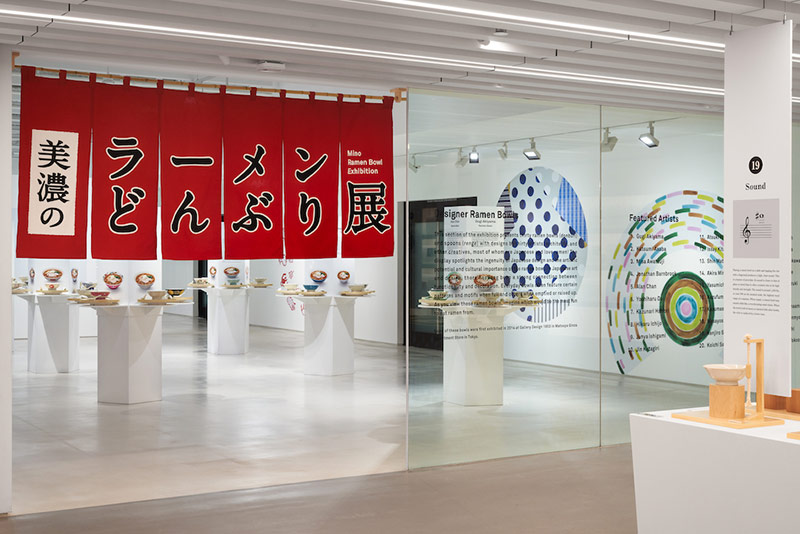
Ten Styles of Mino Ware
The Ceramic Valley of Mino is located in Gifu prefecture in Japan’s Chubu region, and includes Tajimi City, Toki City, Mizunami City, and Kani City. With a long history of ceramic production reaching back to the seventh century, the region now hosts hundreds of entities involved in the creation of “Mino ware” — from individual ceramicists and clay-mining companies to kiln and machine makers and trading corporations that distribute the wares.
The ten styles of Mino ware include Shino Ware, Oribe Ware, Kizeto Ware, Setoguro Ware, Iron Glaze, Ash Glaze, Celadon, Slip Ware, Blue-and-White Porcelain, Overglaze-Enameled Porcelain.
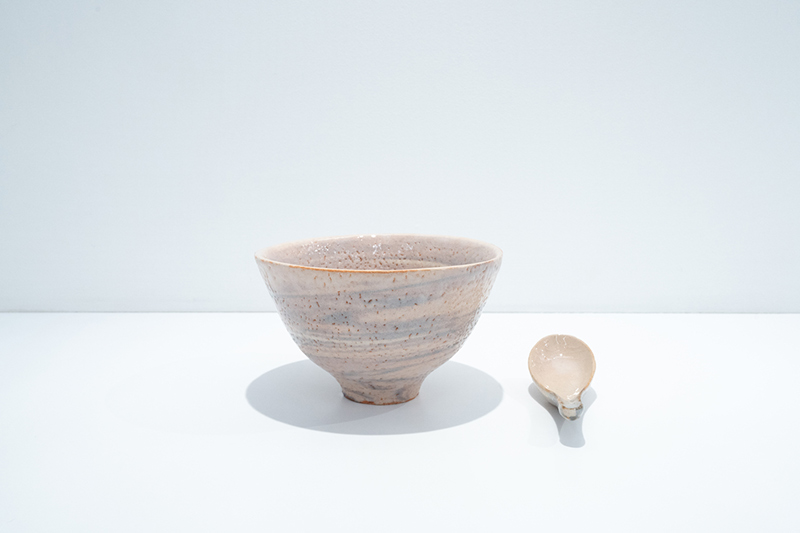
Shino Ware
Takumi Ando
Shino wares are ceramics (usually high-firing stonewares) with a thick, creamy white feldspar glaze. They were created in Mino during the Momoyama period (1573 - 1615) for use in the tea ceremony— mostly tea bowls, water jars, and mukozuke food bowls. Many are decorated under the glaze with simple iron-brown painted landscapes, plants, and geometric patterns— the first underglaze painting on Japanese ceramics. Some feature subtle colors, such as the grayish Nezumishino (Mouse Shino) — in which designs are etched into an iron-black coating and covered with creamy white glaze— and Benishino (Red Shino), with a rusty red hue derived from a similar iron-red coating beneath the glaze. Production of Shino wares ceased after the Momoyama period but was revived in the twentieth century.
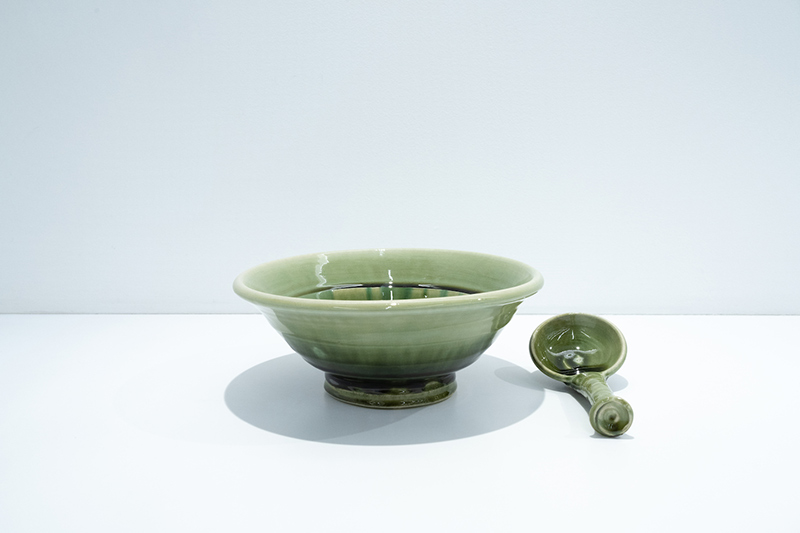
Oribe Ware
Hiroshi Sakaguchi
Oribe wares are a novel and whimsical style of ceramics (usually high-firing stonewares) that evolved in the Mino kilns during the Momoyama period (1573 - 1615) later than Shino and other wares. They are named after Furuta Oribe (1544 - 1615), a military commander and tea master from Mino. The most well-known types feature a copper-green glaze. Ao-oribe (Green Oribe) pairs green-glazed sections with iron-brown underglaze designs on a white background, while Narumioribe uses a reddish clay to create more color contrast, and Sooribe (Monochrome Oribe) is predominantly green. Oribe-guro (Oribe Black) and Kuro Oribe (Black Oribe) use the Setoguro technique, and Shino Oribe inherited the white glaze of Shino wares. Oribe wares are known for their playful forms, such as the oval kutsugata bowls, and their vibrant, untraditional patterns. The ultimate Momoyama ceramic, their production also ended after the early seventeenth century and was revived in the twentieth century.
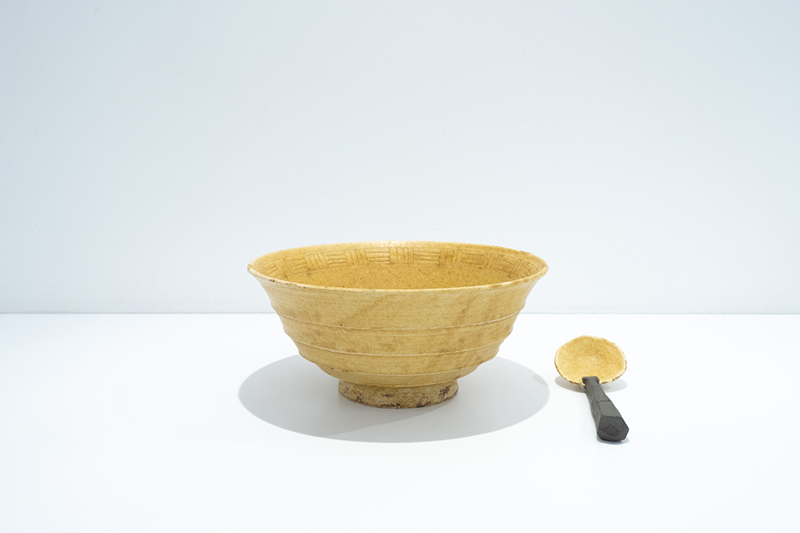
Kizeto Ware
Mitsuhide Kato
Kizeto (Yellow Seto) wares are ceramics (usually high-firing stonewares) with a pale yellow ash glaze, which evolved from earlier ash glazes. During the Momoyama period (1573 - 1615), Mino potters increased the silica in the glaze mixture, which resulted in devitrification and the yellow color. Most Kizeto wares are tablewares, such as food dishes and bowls. On some, designs of plants or characters are stamped onto the soft surface of the clay before firing, with accents of copper green or iron brown applied on top of the glaze. Kizeto ware production stopped after the Momoyama period, and began again in the twentieth century.
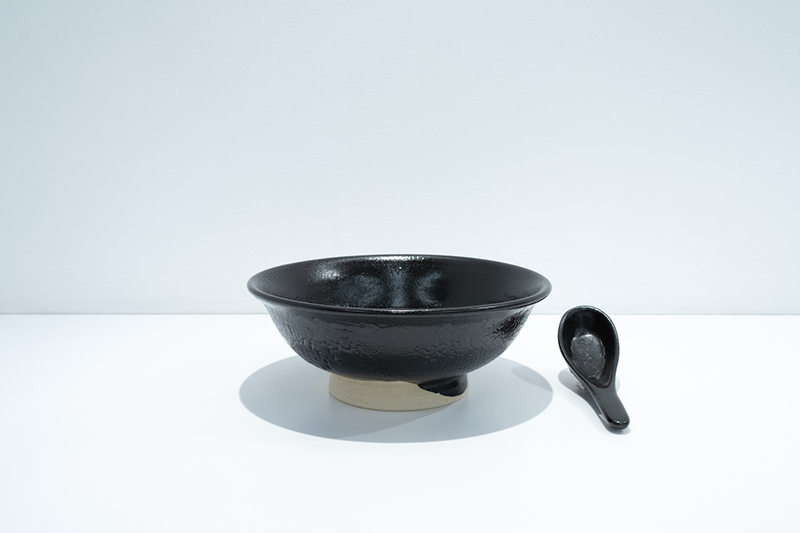
Setoguro Ware
Ryotaro Kato
Setoguro (Seto Black) wares are ceramics (usually high-firing stonewares) with a jet-black glaze. They were first made during the Momoyama period (1573 - 1615), when Mino kilns mostly produced tea bowls for the tea ceremony. Firing the bowls at a high temperature of over 1,200°C (2,190°F) and then cooling them rapidly causes the iron in the glaze to turn a deep, shiny black. Many well-known Setoguro bowls have angular, tube-like shapes with ridges formed with a bamboo spatula, and rims that undulate like a mountain path. The tea master Sen no Rikyu (1522 - 1591), who promoted a humble style of the tea ceremony known as wabicha, favored the jet-black glaze since its color and sheen perfectly contrasted with the deep green of the tea. These Momoyama bowls were revived in the twentieth century.
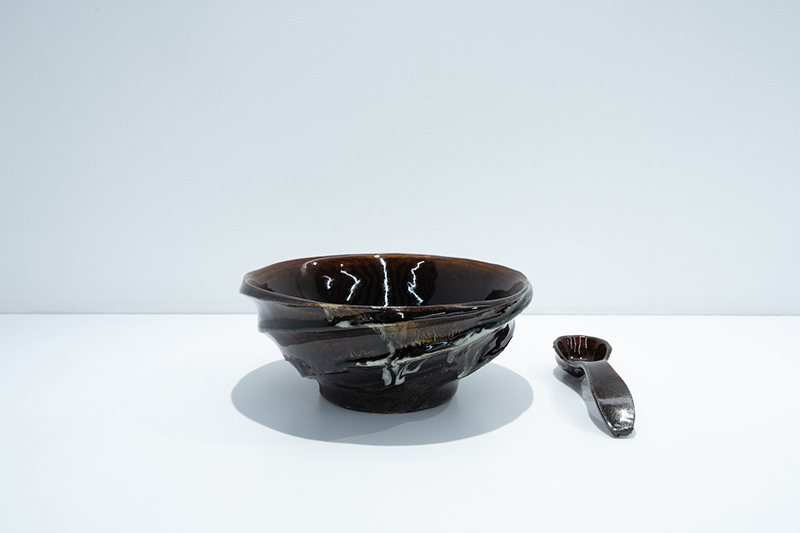
Iron Glaze
Nobuya Yoshioka
Iron glazes are colored by iron, and their hues vary from yellow to deep black, depending on the quantity of iron in the glaze mixture. Chinese in origin, these glazes were first used in Mino in the late Muromachi period (1333 - 1573). They are featured on tea bowls and tea caddies known as Temmoku wares, after the brown and black Chinese iron-glazed wares prized in the tea ceremony. Iron glazes appeared widely in the Edo period (1603 - 1868), primarily on sake bottles, rice bowls, and other daily wares. The range of colors is reflected in the many names: yellow glaze, candy glaze, brown glaze, rust glaze, persimmon glaze, and black glaze.
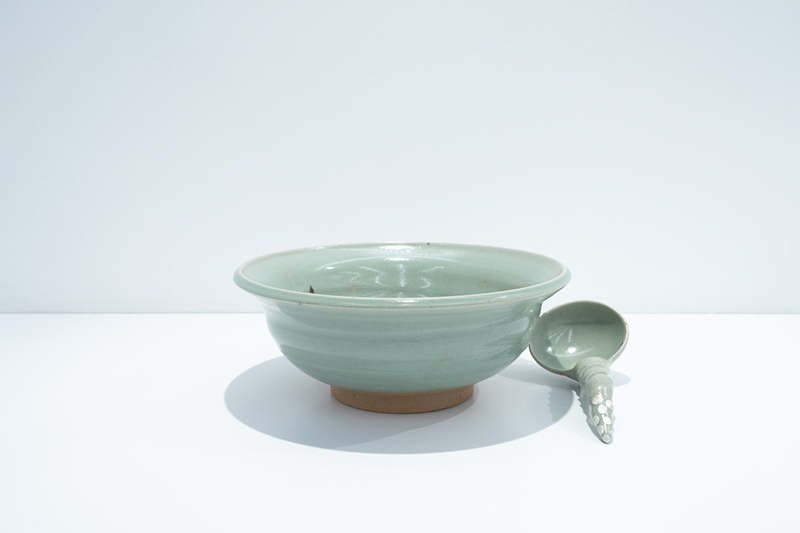
Ash Glaze
Yoji Kato
Ash glazes are ceramic glazes made from the ash of plants and trees. Originating in Chinese ceramics, they became common in Korean and Japanese ceramics, and first appeared in the Mino kilns during the early Heian period (794 - 1185). Depending on the type of ash used and the firing method, glazes can vary greatly from transparent to opaque, including the glossy green bidoro (from the Portuguese vidro, for glass), an old technique in which the glaze pools and forms glassy accents known as “dragon-fly eyes.” Ash glazes have been used for much of Mino’s 1,300-year history.
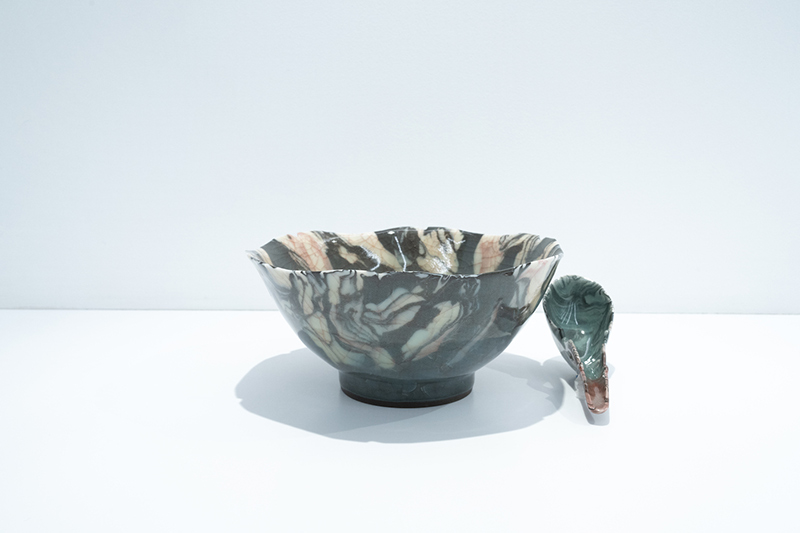
Celadon
Kei Wakao
Celadon is a pale greenish-blue glaze. The color derives from a small amount of iron in the glaze mixture and a reduction firing (when the kiln atmosphere is starved of oxygen). This glaze originated in China and was sometimes applied in layers to deepen the color or carved to create patterns. Celadon-glazed ceramics were imported into Japan during the Heian period (794 - 1185) and were collected and admired by aristocrats, military rulers, and tea masters. In Mino, some of the Ofukei wares made in the early Edo period (1693 - 1868) had the appearance of celadons, and since the Meiji period (1868 - 1912), the glaze has been used on Mino porcelains.
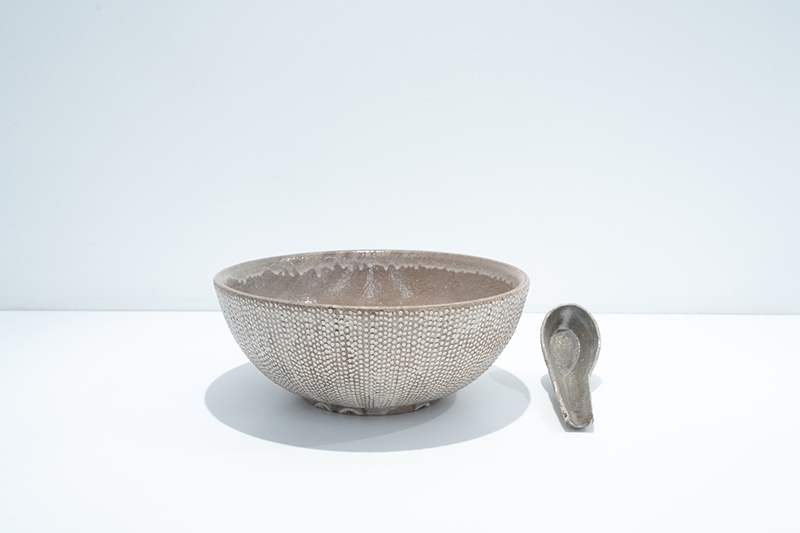
Slip Ware
Daisuke Tomioka
There is a tradition of covering dark-colored, iron-rich ceramic vessels with a coating of slip, or white liquid clay. This technique was used widely in Korea in the fifteenth and sixteenth centuries on ceramics that became very popular with Japanese tea masters. Korean bowls, sake bottles, and sake cups were brought to Japan, collected and highly prized for use in the tea ceremony. In the late sixteenth century, the technique was copied in Japanese kilns such as Hagi in Yamaguchi prefecture, which were established by Korean potters, and then later used in the Mino kilns.
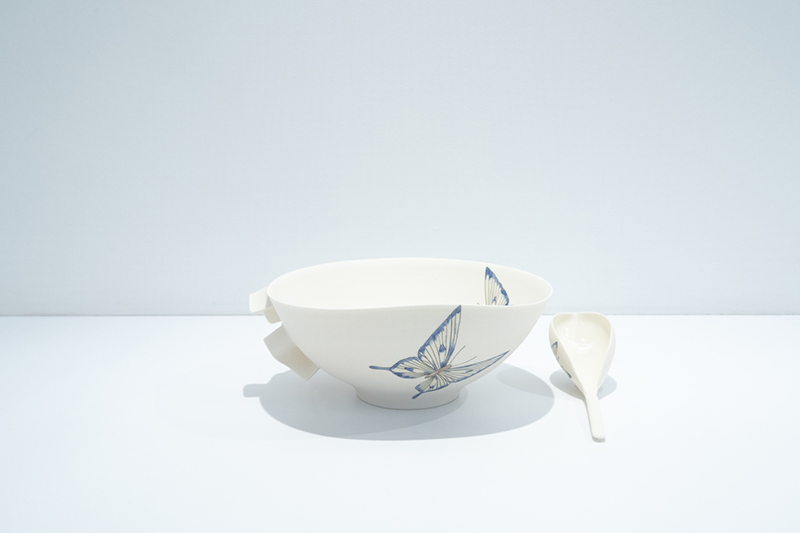
Blue-and-White Porcelain
Hitoka Kato
Porcelains are pure white ceramics, usually coated with a transparent glaze and fired at very high temperatures, between 1,200°C (2,190°F) to 1,400°C (2,550°F). Blue-and-white porcelains feature designs painted onto the white clay body with cobalt, a mineral oxide that turns blue in a reduction firing (when the kiln atmosphere is starved of oxygen). Originating in China, porcelains were made in Arita in Hizen (modern Saga prefecture) in the early seventeenth century. Influenced by the Arita and Seto porcelain kilns, the Mino kilns began producing porcelains in the nineteenth century. Since then, Mino has mass-produced blue-and-white porcelains that are decorated with hand-painted designs as well as those with designs applied using transfer techniques.
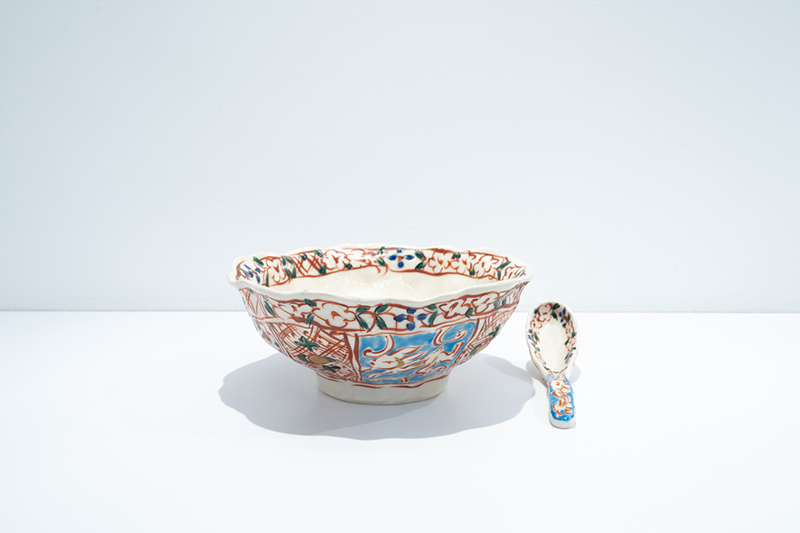
Overglaze-Enameled Porcelain
Hiroshi Hanazawa
On some ceramics, designs are painted onto the transparent glaze after the vessels have been fired. The pigments used are enamels (glazes colored by iron and other metal oxides) that harden when the vessel is fired again at a low temperature. The most elaborate examples are known in Japanese as nishikide, or brocade paintings. This decorative technique originated in China and was first used in Japan in the seventeenth century at some of the Arita porcelain kilns and later in Kyoto ceramics. The technique became popular in Mino after the Meiji period (1868 - 1912), and since then colored enamels have been applied by hand and through transfer techniques.


